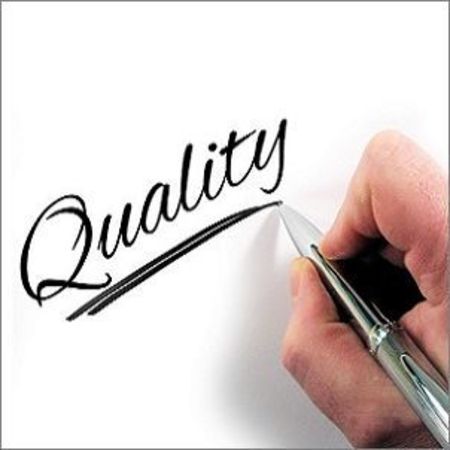Use of Lean management methodology to improve care efficiencies is new for healthcare. A new report in The Journal of Nursing Administration describes how a Lean-based in the emergency department of a large hospital significantly reduced patients’ wait times and length of stay, while improving patient throughput and satisfaction level.
The approach could serve as a model for other healthcare organisations addressing ED crowding or seeking to adopt Lean principles in their organisation. Lean management is a strategy that promotes continuous improvement within an organisation. The focus is on achieving small, incremental changes in processes in order to improve efficiency and quality.
"I think the principles of Lean management can be applied throughout healthcare, however it is probably best suited for departments and procedures that are amenable to some degree of standardisation and quantitative study," the report co-author David Pickham, PhD, RN, Director of Research, Patient Care Services, Stanford Health Care, told HealthManagement.org.
"The main challenge that I see is in building collaborations. For a department to be successful in incorporating Lean management, they have to engage and educate the frontline staff, not only to the goals of Lean, but also to the daily functions that maintain a Lean workplace," Pickham explained. "In healthcare, that is where the value is, at the bedside providing care. Involving frontline staff in all facets of Lean Management will help to build a system that is both responsive and congruent to the unit microsystem."
A Stanford Health Care multidisciplinary team led by nursing leadership and physicians developed a plan to meet increasing demand and improve the patient experience in the ED without expanding the department’s current resources. The approach included Lean tools and engaged frontline staff and physicians. An important goal was to ensure efficiency and feasibility in any new performance improvement initiative that was developed, without expanding the size of the ED or increasing resources. The Lean programme resulted in the following:
Central relocation of all ED supplies to a single area. Previously, staff moved from one area to another to locate multiple supplies for a single patient experience. In addition, supplies were arranged by category and colour coded to provide standardisation, a key aspect in establishing a highly reliable Lean organisation.
Reduction in wait times and patients who left-without-being-seen (LWBS). A new fast-track process was established — ie, low-acuity patients are separated from the main ED and receive prompt care from a dedicated team of ED physicians, nurses, and technicians. The team established a fast-track metric goal of door-to-disposition of less than 90 minutes.
Door-to-provider time down to 13 minutes (from 49). A team triage (TT) programme was developed. Patients are quickly assessed in a triage area by a care team consisting of a physician, nurse, and an ED technician. Urgent patients are promptly moved to a treatment room for care to be initiated, whereas non-urgent patients are tested and/or treated in the TT area. Non-urgent patients are discharged home or return to the waiting area until test results and/or a treatment room is available.
Active daily management supporting continuous improvement activities. A team composed of nursing leadership and ED physicians worked to create standard process descriptions for essential management functions. Leaders observe how teams are progressing with improvement work, assess whether results are being sustained, and build staff capacity around problem solving. Also, "daily huddles" allow managers and staff to come together to share information and discuss relevant concerns impacting patient care that day.
In a Lean organisation, leaders support frontline staff by being present within the workplace. The key tenet of active daily management is that leaders are highly visible, proactive, and responsive to the needs of patient care staff.
"At Stanford Health Care we believe in the benefits of this [Lean] management theory and as such, the whole organisation’s operating system is predicated on Lean principles. Lean management may not be a fit for all instances, but we find all instances are benefited by some form of Lean management," Pickham said.
Lucie Robson, Senior Editor; Dran Coronado, Editor
HealthManagement.org
Source: Journal of Nursing Administration; Interview
Image credit: Pixabay
The approach could serve as a model for other healthcare organisations addressing ED crowding or seeking to adopt Lean principles in their organisation. Lean management is a strategy that promotes continuous improvement within an organisation. The focus is on achieving small, incremental changes in processes in order to improve efficiency and quality.
"I think the principles of Lean management can be applied throughout healthcare, however it is probably best suited for departments and procedures that are amenable to some degree of standardisation and quantitative study," the report co-author David Pickham, PhD, RN, Director of Research, Patient Care Services, Stanford Health Care, told HealthManagement.org.
"The main challenge that I see is in building collaborations. For a department to be successful in incorporating Lean management, they have to engage and educate the frontline staff, not only to the goals of Lean, but also to the daily functions that maintain a Lean workplace," Pickham explained. "In healthcare, that is where the value is, at the bedside providing care. Involving frontline staff in all facets of Lean Management will help to build a system that is both responsive and congruent to the unit microsystem."
A Stanford Health Care multidisciplinary team led by nursing leadership and physicians developed a plan to meet increasing demand and improve the patient experience in the ED without expanding the department’s current resources. The approach included Lean tools and engaged frontline staff and physicians. An important goal was to ensure efficiency and feasibility in any new performance improvement initiative that was developed, without expanding the size of the ED or increasing resources. The Lean programme resulted in the following:
Central relocation of all ED supplies to a single area. Previously, staff moved from one area to another to locate multiple supplies for a single patient experience. In addition, supplies were arranged by category and colour coded to provide standardisation, a key aspect in establishing a highly reliable Lean organisation.
Reduction in wait times and patients who left-without-being-seen (LWBS). A new fast-track process was established — ie, low-acuity patients are separated from the main ED and receive prompt care from a dedicated team of ED physicians, nurses, and technicians. The team established a fast-track metric goal of door-to-disposition of less than 90 minutes.
Door-to-provider time down to 13 minutes (from 49). A team triage (TT) programme was developed. Patients are quickly assessed in a triage area by a care team consisting of a physician, nurse, and an ED technician. Urgent patients are promptly moved to a treatment room for care to be initiated, whereas non-urgent patients are tested and/or treated in the TT area. Non-urgent patients are discharged home or return to the waiting area until test results and/or a treatment room is available.
Active daily management supporting continuous improvement activities. A team composed of nursing leadership and ED physicians worked to create standard process descriptions for essential management functions. Leaders observe how teams are progressing with improvement work, assess whether results are being sustained, and build staff capacity around problem solving. Also, "daily huddles" allow managers and staff to come together to share information and discuss relevant concerns impacting patient care that day.
In a Lean organisation, leaders support frontline staff by being present within the workplace. The key tenet of active daily management is that leaders are highly visible, proactive, and responsive to the needs of patient care staff.
"At Stanford Health Care we believe in the benefits of this [Lean] management theory and as such, the whole organisation’s operating system is predicated on Lean principles. Lean management may not be a fit for all instances, but we find all instances are benefited by some form of Lean management," Pickham said.
Lucie Robson, Senior Editor; Dran Coronado, Editor
HealthManagement.org
Source: Journal of Nursing Administration; Interview
Image credit: Pixabay
References:
Pickham D et al. (2015) Lean Manufacturing Improves Emergency Department Throughput and Patient Satisfaction. Journal of Nursing Administration,
September 2015. doi: 10.1097/NNA.0000000000000228
Latest Articles
healthmanagement, lean management, lean approach, quality improvement, emergency department, triage
Use of Lean management methodology to improve care efficiencies is new for healthcare. A new report in The Journal of Nursing Administration describes how a Lean programme in the emergency department of a large hospital significantly reduced patients’ wai



























